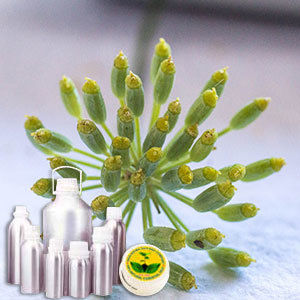Botonical Name | : | Foeniculum vulgare Mill | |
CAS # | : | 8006-84-6 | |
Country of Origin | : | India | |
Color & Odor | : | Clear, pale yellow liquid @22C with herbaceous, peppery odor | |
Solubility | : | Insoluble in water, soluble in alcohol and oils. | |
F.E.M.A. # | : | 2483 | |
Specific Gravity | : | 0.965 - 0.977 @ 20°C | |
Optical Rotation | : | (+11°) to (+24°) @ 20°C | |
Refractive Index | : | 1.528 - 1.539 @ 20°C | |
Flash Point | : | 65 °C | |
Plant Part Used | : | Seeds | |
Extraction Method | : | Steam distillation |
DESCRIPTION:
Fennel oil has a herby, slightly spicy smell, much like aniseed and it is clear in viscosity. The seeds are used to extract the oil which is mainly used for medicinal purposes.CONSTITUENTS:
anethole, limonene, and a-terpinene , Particularly monoterpenes, a-pinene, ß-myrcene.AROMATIC SUMMARY / NOTE / STRENGTH OF AROMA:
A top note with a medium aroma, Fennel Sweet Essential Oil has a similar to that of black licorice.BLENDS WITH:
Geranium, lavender, rose and sandalwood.COMMON NAMES:
Anethum foeniculumUSES:
Fennel oil is a remedy for digestive complaints such as flatulence, constipation, colic, nausea, vomiting, anorexia, dyspepsia and hiccups. It is also used in cases of obesity carminative, depurative, diuretic, expectorant, laxative, stimulant, splenic, stomachic, and as a vermifuge


































